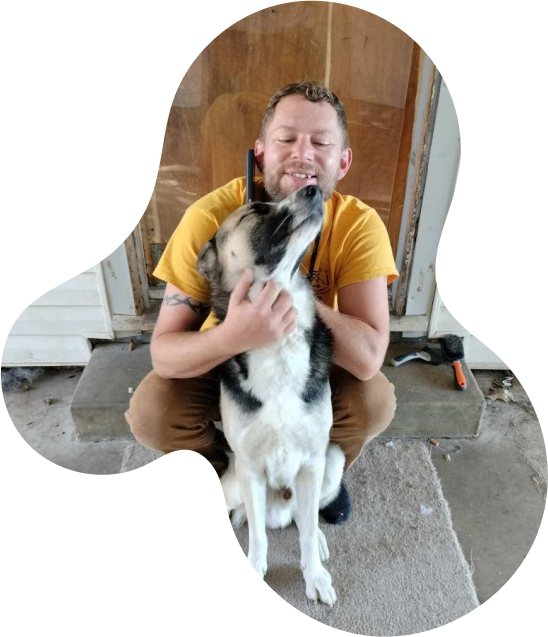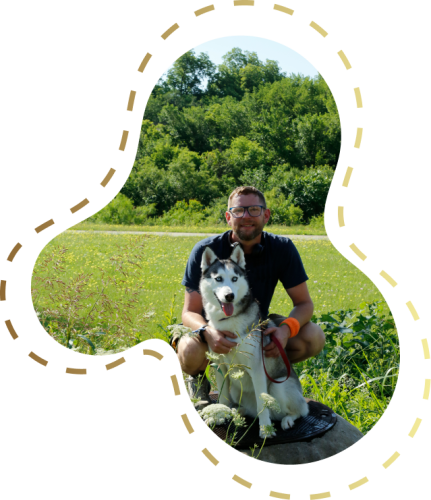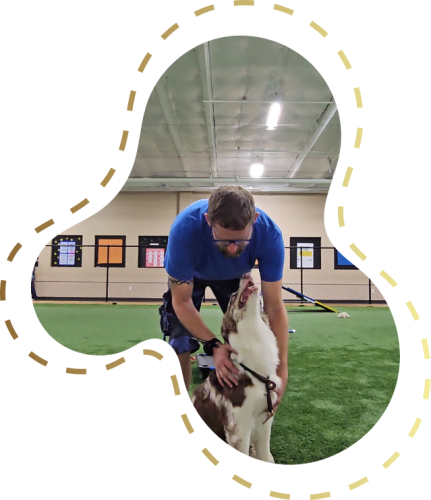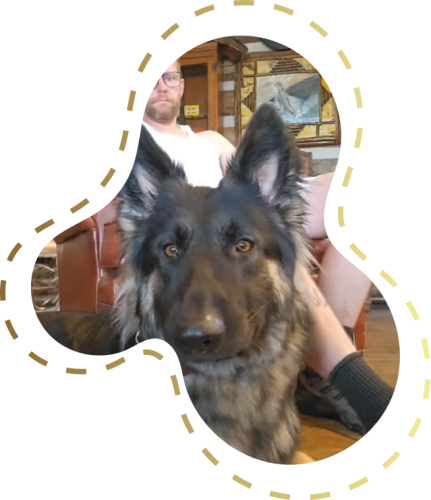About


My Story
At 21 I joined the military and it became another passion of mine but was short lived do to being severely injured in an explosion during a mission. I spent almost two yrs in the wounded warrior battalion healing from a traumatic brain injury and PTSD along with other physical injuries. In 2010 I was finally medically retired.
I moved to Florida where my neighbor was the trainer for our cities police department. She knew my story and thought I would be perfect for a PTSD/MOBILITY STABILITY service dog. She took me to pick out a Cane Corso that was 4 months old and for the next months I trained her. The police dog trainer was amazed at how well I had done and certified my dog and Freyja became the first Cane Corso service dog. From that day on I was hooked.
Dogs have saved my life and gave me love and kindness when I couldn’t find it anywhere else. Because of thos and the path life gave to me I became a hyper empath with a desire so strong to see dogs happy. I’ve been constantly learning, reading every dog training amd behavior book I could get my hands on.
As dog training is an art form amd every dog is unique from the next. I will never stop learning and growing my knowledge.
If theirs one thing I have learned is that the human/canine bond is very special. My most rewarding passion is to be able to help others build the strongest bond they can with their dog all while bringing a little more joy and love into everyones life that I meet.
To date I have trained hundreds of dogs and dog owners. I am a very unique trainer that uses a dogs love and desires to teach them. Where other trainers use disciple I use compassion. Where other trainers force a dog to listen I create a strong positive desire to want to be obedient.
If you want a dog that’s mind longs to be obedient and not just afraid of being punished look know further!

Philosophy/Methodology
Core Principles

Positive Reinforcement:
At the heart of this philosophy lies the principle of positive reinforcement. Dogs, like humans, thrive on positive feedback. Rather than punishing undesirable behaviors, emphasis is placed on rewarding good behavior with play, treats, praise, or affection. This creates a positive association between the desired behavior and the reward, encouraging the dog to repeat the behavior.

Timing is Key:
Effective dog training hinges on precise timing. Rewards should be given immediately after the desired behavior to ensure the dog associates the reward with the action. This instantaneous reinforcement strengthens the connection between the behavior and the positive outcome, facilitating quicker and more lasting learning.

Consistency and Patience:
The power of association plays a pivotal role in shaping a dog’s behavior. By associating a specific cue or command with a positive outcome, such as a play, treat or affection, the dog learns to correlate the two. Over time, this conditioned response becomes ingrained, leading to the development of desired behaviors in various situations.

Association and Conditioning:
Training Techniques

Clicker Training:
Clicker training is a popular tool in reward-based training. The distinct sound of the clicker marks the exact moment the dog performs the desired behavior, followed by an immediate reward. This clear communication aids in precise learning and reinforces positive associations.

Luring and Shaping:
Luring involves using a reward to guide the dog into the desired position or behavior. Shaping takes this a step further, rewarding successive approximations of the desired behavior. Both techniques allow the dog to actively participate in the learning process, promoting engagement and understanding.

Environmental Enrichment:
Beyond formal training sessions, environmental enrichment contributes to a well-behaved dog. Providing mental and physical stimulation through toys, puzzles, and varied activities not only prevents boredom but also channels the dog’s energy into positive outlets, reducing the likelihood of undesirable behaviors.
Contact Info
Copyrights © 2024. Dynamick9 All Rights Reserved. Powered by Softclusive

